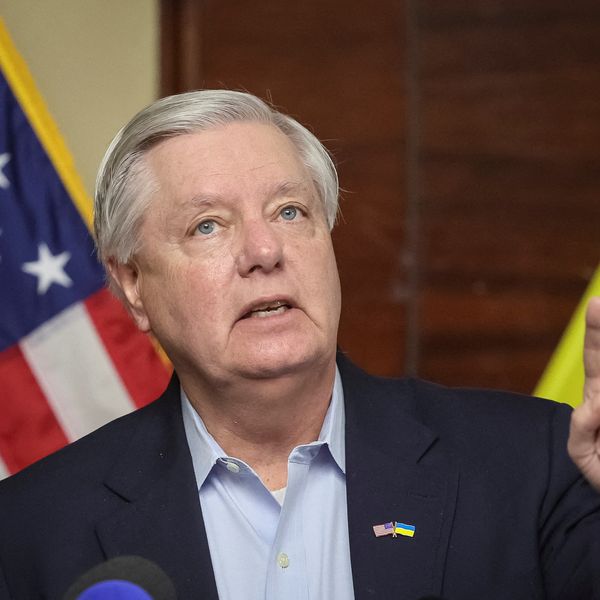America’s debt has more than doubled over the past ten years, skyrocketing from $13 trillion to more than $27 trillion over just two presidential administrations. And, despite successive presidents’ promises to “wind down” conflicts in Iraq and Afghanistan, the defense budget has only gone in one direction— up.
The dysfunctional budgeting process was on full display during the last week of 2020 when lawmakers crammed through a $740 billion defense funding deal as part of a massive $2.3 trillion spending bonanza. This included $696 billion for the Pentagon, and the rest for non-DoD spending like the nation's nuclear weapons program under the Department of Energy. Members of Congress didn’t have all that much time to speed read through the bill’s more than 5,500 pages, allowing special interests to insert massive giveaways to the military-industrial complex. One government watchdog called the overstuffed stimulus package "a sweetheart deal for defense contractors."
Washington needs to ramp up accountability, not goodies to contractors with clout.
Of the many egregious items baked into the combined COVID-omnibus bill, the handouts to the over-budget F-35 fighter jet program take the cake. The spending agreement greenlights 96 new F-35s, or 17 more than the Trump administration requested. The cost of these expensive new toys is $9.6 billion, enough money to pay for the grocery bills of America’s poorest households for a month. These expenditures might be understandable if the F-35 was capable of protecting America at an affordable price-tag. But the fighter jet has proven to be a high-speed disaster for taxpayers.
The Drive contributor Thomas Newdick notes, “All three F-35 variants have in the past been plagued by a litany of deficiencies, including performance limitations, difficulties operating in extreme weather, dangerous cockpit pressure incidents, faults in the helmet-mounted display, serious safety concerns in the event of a blown tire, and more.”
And due in part to “technical difficulties,” operational testing of the F-35 in the Joint Simulation Environment has been delayed and won’t commence until mid-to-late 2021. But even without proper testing and evaluation against simulated threats, lawmakers are insisting on buying more F-35s at an outrageously-high cost.
The bill also showers $23.3 billion on the Navy for 10 ships, including funding of an extra Virginia-class submarine for the low, low price of $2.3 billion. At first glance, this seems like an eminently reasonable request. Unlike the F-35 program, Virginia-class attack submarines have a reliable track-record of ahead-of-schedule production, without significant cost overruns. It’s not the program itself that’s the problem, but rather the timing. The Navy is also constructing the first Columbia-class ballistic missile submarine this year, leading to concerns that building an additional Virginia-class ship would strain the Navy’s industrial bandwidth.
Even though the chief rationale for the extra Virginia-class submarine is countering Chinese naval might, the U.S. is actually on stronger footing than some defense hawks suggest, at least for now. According to some observers, Chinese submarines tend to be smaller and shorter-ranged than their U.S. counterparts. We should not discount our allies’ efforts to supplement deterrence in the region, either. Taiwan’s submarine program today sends a strong message that we are not alone and should be thinking about opportunities for sharing the burdens of balancing power in the western Pacific.
Additionally, Defense News contributor Joe Gould notes that the omnibus bill funds “the Army long-range hypersonic weapon at $861 million, or $60 million above the request; provides $88.1 million above the request for systems integration and testing in support of the Army’s mid-range missile development; and provides $161 million to support the Army’s enduring Indirect Fire Protection Capability program.” These programs may well be worthwhile, but it’s unclear why lawmakers continue to insist on putting in funding above initial requests. The military, after all, would surely have no issue requesting additional funding if they felt they needed it.
Perhaps the most egregious area of spending, however, is the $77 billion in Overseas Contingency Operations expenditures. OCO is a black hole of waste devoid of any accountability, yet lawmakers continue to fund these open-ended operations. In theory, this spending category is supposed to go to the fight against Middle East militants and the war in Afghanistan. But watchdogs realized years ago that OCO has become a yearly “slush fund” to pay for non-war related items. Back in 2017, the Government Accountability Office found that “the amount of OCO appropriations DoD considers as non-war increased from about four percent in fiscal year 2010 to 12 percent in fiscal year 2015.”
Admiral Mike Mullen, former Chairman of the Joint Chiefs of Staff, said it best when he proclaimed the national debt to be the number one threat to national security. That doesn’t mean not having a Pentagon or national defense, but it does mean getting serious about how such spending is prioritized.
By scrapping the F-35 program and committing to a more sustainable pace of submarine production, the U.S. can ensure an effective national defense without breaking the bank. The entire world — including U.S. taxpayers — is watching.














